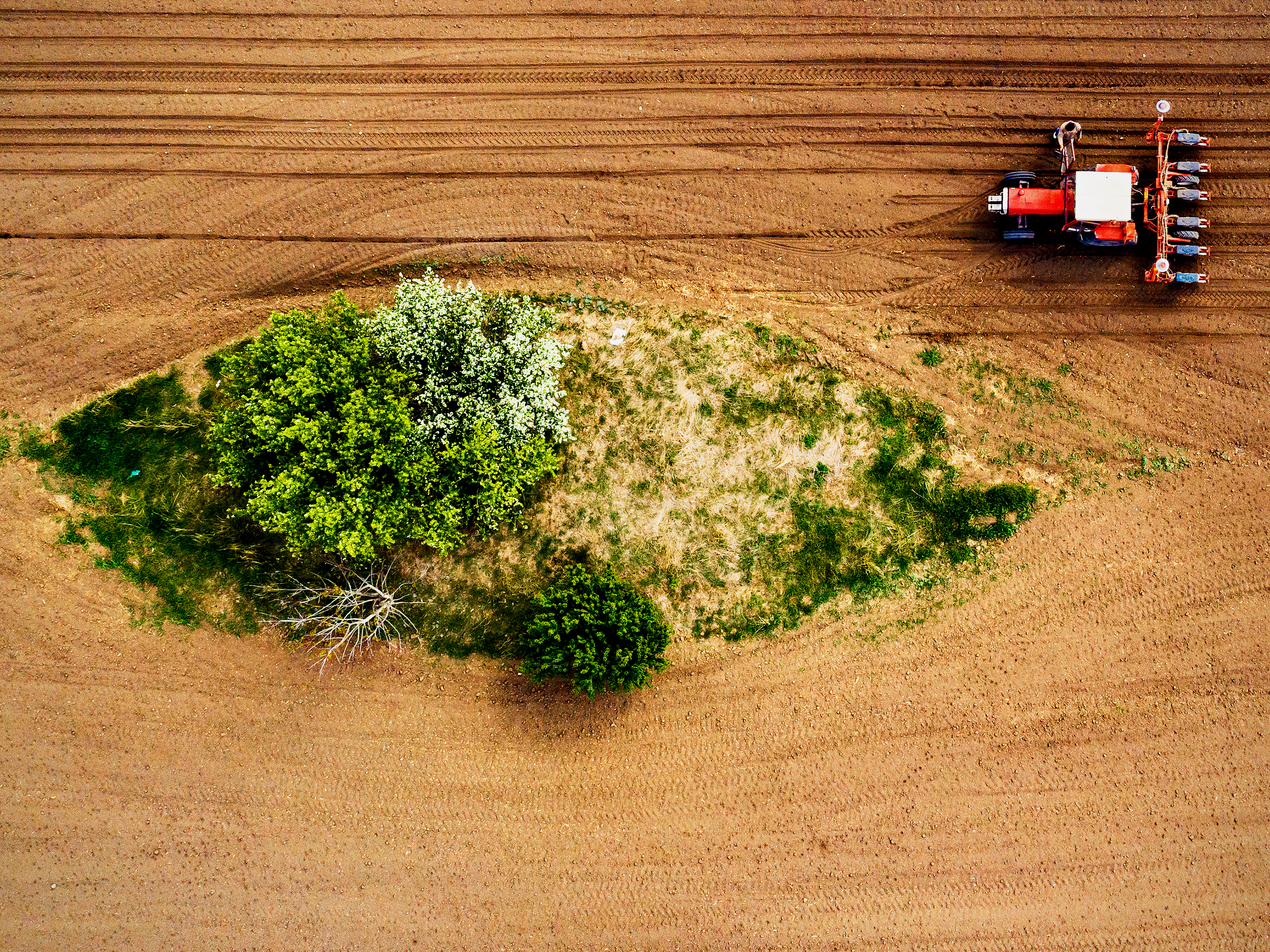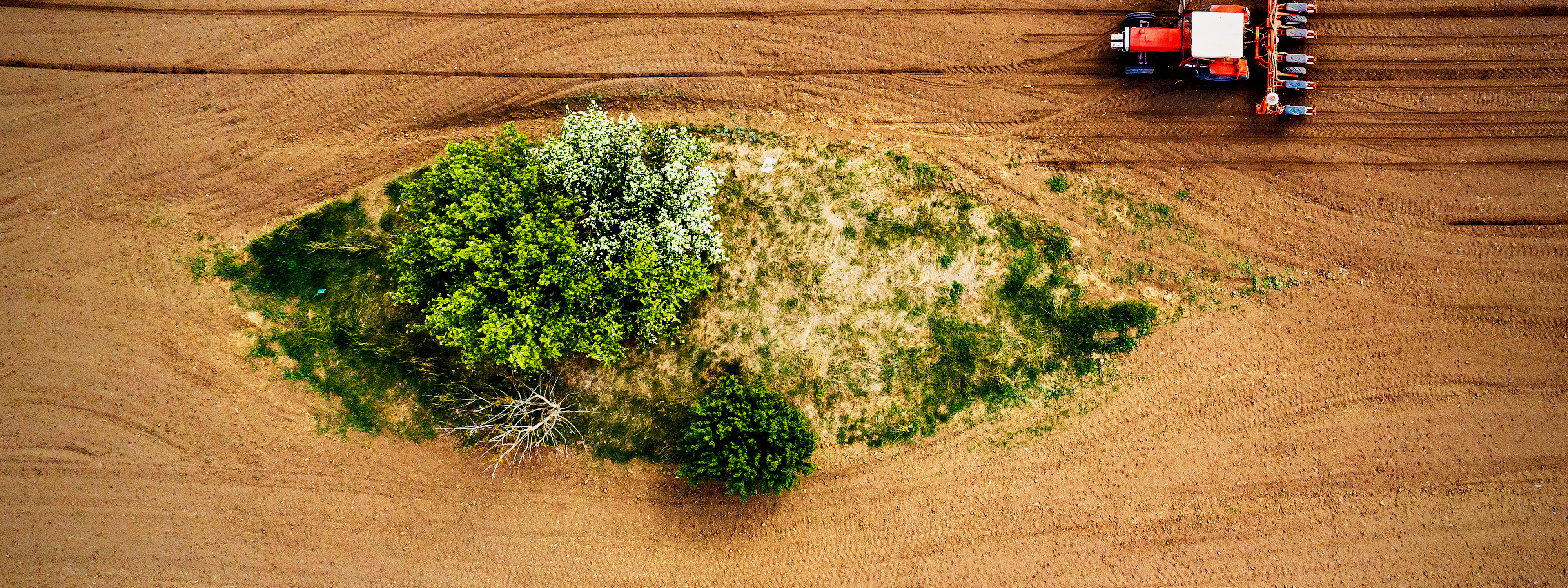Quantitative assessment of soil’s potential to sequester carbon to mitigate climate change
Nov 28, 2023, Global
Introduction
Healthy and living soils play a very important role in achieving at least 12 SDGs and indirectly achieving all the 17 SDGs. Reducing carbon emissions and subsequently removing them from the atmosphere is vital for keeping the global temperatures below two degrees centigrade. In this paper, we specifically try to quantify the potential of agriculture soils’ to sequester carbon, based on secondary research.
The Paris Climate Pledges
Recent years have seen the launch of three high level initiatives that present healthy soils as the possible solution to climate change mitigation. They include the international 4p1000 initiative (launched at UNFCCC COP 21), the Koronivia workshops (launched at COP 23), and FAO’s RECSOIL program (2019). All of these initiatives carry the message that increasing soil organic carbon has huge potential to sequester and store carbon from the atmosphere. Of the carbon emission reduction targets required to keep global temperatures below 2℃, croplands can sequester nearly 10% of carbon emissions, with fodder producing pasture lands able to sequester an additional 17%.
Global Carbon Sequestration Potential in Croplands
Globally agricultural land area is approximately five billion hectares, or 38%of the global land surface. About one-third of this is used as cropland, while the remaining two-thirds consist of meadows and pastures for grazing livestock(1). A study on technical feasibility of various sustainable soil management techniques estimates that applying them to these lands could remove 0.79 and 1.54 GtC per year from the atmosphere(2).
For the past few years, a number of publications have estimated the total carbon sequestration potential in croplands (Table 1). The earlier annual carbon sequestration estimates from Zomer et al have been revised by Padarian et al to a more modest 0.34 PgC/yr, based on observations and more stringent data inclusion. However, it must be noted that the carbon sequestration rates will not be uniform across various land uses(3). Therefore, considering a more conservative estimate of 0.34 PgC/yr would be best.
The international “4p1000 Initiative: Soils for Food Security and Climate” - launched in 2015 at the Paris climate summit - promotes research and actions globally to increase soil organic carbon (SOC) stocks by 4 parts per 1,000 per year. This aspiration is significant because increasing the SOC by just 0.4% in soils can significantly mitigate the annual emissions of CO2 from anthropogenic activities. The aspirational target of a 0.4% annual increase in global SOC stemmed from earlier realizations that soil holds at least twice as much carbon as in the atmosphere. These aspirations seem to be technically feasible, as agricultural soils have been observed to sequester carbon at rates equal to or higher than this(7). As shown in Table 1, the latest estimated carbon sequestration potential of the soils of croplands is equivalent to ~10% of the emission reduction targets to keep the global temperature below 2°C.
Global Carbon Sequestration Potential in Grasslands / Pastures
Grasslands and pasture lands contain nearly one-fifth of the global carbon stocks and therefore possess a great potential for carbon sequestration(8). A recent report from FAO suggests that 17% of the 4 per 1000 target could be reached in the top 30 cm of grasslands and continue at least 20 years after adoption of SOC enhancing management, such as the incorporation of animal manures, agroforestry and rotational grazing(9). To achieve this, the annual carbon sequestration rate in the grasslands needs to be nearly 0.18–0.41 tonnes C/ha every year. FAO has used RothC models for estimation of global sequestration potentials in grasslands and improved grasslands, as studies in this area are very few.
Conclusion
The conservative assumption of the carbon sequestration potential of cropland is around 10%, as per Padarian et al. Moreover, the carbon sequestration potential of grasslands / pasture lands is 17%, as per FAO report. Therefore, maintaining a conservative basis, the overall potential for lands under farmer stewardship to sequester carbon is 27% of the targets necessary to keep global temperature below 2°C.
References
(1) FAOSTAT. https://www.fao.org/faostat/en/#data/RL/visualize
(2) Fuss, S. et al. Negative emissions—part 2: costs, potentials and side effects. Environ. Res. Lett. 13, 063002 (2018).
(3) FAO and ITPS. 2021. Recarbonizing global soils – A technical manual of recommended management practices. Volume 2 – Hot spots and bright spots of soil organic carbon. Rome, FAO. https://doi.org/10.4060/cb6378en
(4) Padarian J, Minasny B, McBratney A, Smith P. Soil carbon sequestration potential in global croplands. PeerJ. 2022 Jul 21;10:e13740. doi: 10.7717/peerj.13740. PMID: 35891649; PMCID: PMC9308964.
(5) Lal, R., Smith, P., Jungkunst, H. F., Mitsch, W. J., Lehmann, J., Nair, P. K. R., McBratney, A. B., de Moraes Sá, J. C., Schneider, J., Zinn, Y. L., Skorupa, A. L. A., Zhang, H.-L., Minasny, B., Srinivasrao, C., & Ravindranath, N. H. (2018). The carbon sequestration potential of terrestrial ecosystems. Journal of Soil and Water Conservation, 73(6). https://doi.org/10.2489/jswc.73.6.145a
(6) Zomer, R.J., Bossio, D.A., Sommer, R. et al. Global Sequestration Potential of Increased Organic Carbon in Cropland Soils. Sci Rep 7, 15554 (2017). https://doi.org/10.1038/s41598-017-15794-8
(7) Soussana, J.-F., Lutfalla, S., Ehrhardt, F., Rosenstock, T., Lamanna, C., Havlík, P., Richards, M., Wollenberg, E. (Lini), Chotte, J.-L., Torquebiau, E., Ciais, P., Smith, P., & Lal, R. (2019). Matching policy and science: Rationale for the ‘4 per 1000 - soils for Food Security and climate’ initiative. Soil and Tillage Research, 188, 3–15. https://doi.org/10.1016/j.still.2017.12.002
(8) Puche N, Senapati N, Flechard CR, Klumpp K, Kirschbaum MUF, Chabbi A. Modeling Carbon and Water Fluxes of Managed Grasslands: Comparing Flux Variability and Net Carbon Budgets between Grazed and Mowed Systems. Agronomy. 2019; 9(4):183. https://doi.org/10.3390/agronomy9040183
(9) Dondini, M., Martin, M., De Camillis, C., Uwizeye, A., Soussana, J.-F., Robinson, T. & Steinfeld, H. 2023. Global assessment of soil carbon in grasslands – From current stock estimates to sequestration potential. FAO Animal Production and Health Paper No. 187. Rome, FAO. https://doi.org/10.4060/cc3981en
Appendix
This is a visual representation of an analysis by the Save Soil movement of the median SOM for these European countries. It's based on a data set from the European Soil Data Centre (ESDAC) from 2018: https://esdac.jrc.ec.europa.eu/content/lucas-2018-topsoil-data
HAJDE DA TO OSTVARIMO!


